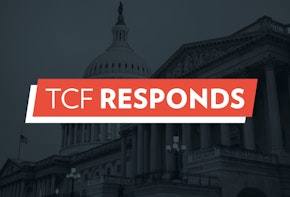Jefferson County Public Schools (JCPS) has a large geographic area and a diverse populace to draw upon for system-wide school diversity efforts. The division comprises one-seventh of all students in Kentucky public schools and is the 28th largest school district in the country. Encompassing the city of Louisville and the surrounding county, JCPS today has over 100,000 pre-K–12 students in 166 school sites, with a demographic composition that is 46 percent white, 37 percent African American, and 17 percent other, including a rapidly growing Latino or Hispanic population.1 Roughly 66 percent of students are eligible for free or reduced-price lunch.
These attributes are both a result of, and a contributor to, an extensive history of racial and socioeconomic integration in JCPS that began with legal enforcement but continues as a result of the commitment of district leaders and community members.
History of School Integration Efforts in JCPS
The very existence of the joint city-county school district is rooted in enforced desegregation decisions, yet today JCPS maintains a voluntary and ongoing commitment to school diversity. After a desegregation order by the 6th U.S. Circuit Court of Appeals, the once-separate city and county school systems merged and adopted a single desegregation plan in 1974.2 This mandatory plan continued through 1978 when the courts ended active oversight.
Although the decrease in court supervision of desegregation orders precipitated a period of resegregation in other districts across the nation, JCPS persisted in its integration efforts. Even after mandatory action ended, it maintained support for ensuring racial and economic diversity and employed a zone system with guidelines for a targeted range of African American enrollment in each of its schools.3
In 1991, the system adopted “Project Renaissance,” a managed choice plan that emphasized parental choice and racial composition guidelines at each school level. According to a new book focused on the long-term integration efforts of JCPS and other major school systems, “Project Renaissance represented the beginning of extensive controlled choice in the student assignment plan. Controlled choice asked families to rank a set of school choices, with the district making the final assignment decisions in service of creating racially diverse schools.”4
Throughout the late 1990s and early 2000s, the system repeatedly refined its approach to balancing choice with diversity guidelines. The district’s plan evolved in response to a series of lawsuits filed by both black parents and white parents concerned about the racial limits on enrollment. The student assignment plan withstood these challenges with some modifications until a JCPS parent petition merged with a Seattle case to become the U.S. Supreme Court case Parents Involved in Community Schools v. Seattle School District No. 1 (PICS).5
The 2007 PICS decision prompted system leaders to adjust methods once again. According to Dr. Dena Dossett, the JCPS Chief of Data Management, Planning and Program Evaluation, “After PICS, the school board committed to looking at diversity through multiple factors including race, income, and educational attainment.”6 The revised student assignment plan of 2008 established regional clusters with a minority composition of more than 48 percent and set ranges of school representation from each cluster. This plan once again faced court challenges from 2010–2012 until upheld by the Kentucky Supreme Court.7 In 2011, the district undertook a revision initiated by the previous superintendent and school board and contracted with Gary Orfield and Erica Frankenberg to help review the plan with a goal of increasing efficiency and effectiveness and reducing “excessive” transportation times while maintaining a diverse system.8
Stories of School Integration
View the profiles of school districts and charter schools pursuing socio-economic integration.The Future of Brown Is Multiracial
How My Family’s Immigration Story Connects to Integration
New York City Public Schools: Small Steps in the Biggest District
Chicago Public Schools: Ensuring Diversity in Selective Enrollment and Magnet Schools
Hartford Public Schools: Striving for Equity through Interdistrict Programs
Stamford Public Schools: From Desegregated Schools to Integrated Classrooms
Dallas Independent School District: Integration as Innovation
Jefferson County Public Schools: From Legal Enforcement to Ongoing Commitment
Eden Prairie Public Schools: Adapting to Demographic Change in the Suburbs
Champaign Schools: Fighting the Opportunity Gap
The Current Plan
JCPS’s present-day student assignment plan strives to balance the dual goals of providing family choice among school options with diversity in school enrollment. To do so at the elementary level, the district has categorized every census block within its geographic boundaries based upon that area’s average household income, percentage of white residents, and educational attainment (see Figure 1). Based upon the number of students attending a school from each of those three categories, each school receives a diversity index rating, with a goal to keep each school’s enrollment within an index range from 1.4 to 2.5.
| Table 1. Jefferson County Public Schools Diversity Index | |||
| Category 1 | Category 2 | Category 3 | |
| Income | Less than $42,000 | $42,000-$62,000 | More than $62,000 |
| Percent White | Less than 73% | 73-88% | More than 88% |
| Education Attainment (6 point scale) | Up to an associate’s degree (Less than 3.5) | College courses beyond an associate’s degree (3.5-3.7) | College courses up to a bachelor’s degree and beyond (More than 3.7) |
| Note: Each student is classified as a category 1,2, or 3, based on the category of the block group in which the student resides. A School’s diversity index is calculated as a weighted average of the number of students who attend from each diversity category. The district’s goal is for each school’s diversity index to fall within the range of 1.4 to 2.5.
Source: Dena Dossett, Chief of Data Management, Planning and Program Evaluation, Jefferson County Public Schools. |
|||
Families of elementary students may choose from schools within a regional cluster or magnet schools that enroll students district-wide. The district then assigns students to schools based upon the family preference ratings and the target school diversity index range. Alana Semuels described the approach in a profile in The Atlantic on March 27, 2015, “Parents fill out an application listing their preferences for certain schools in the cluster, and the district assigns students to certain schools in order to achieve diversity goals… Parents can appeal the school assignments, but have no guarantee of getting their top choice. They can also apply for magnet schools and special programs such as Spanish-language immersion.”9

At the secondary level, students are assigned to a school of residence within regional clusters, which have been drawn to maximize the diversity of those neighborhoods.
Transportation has long been an important component of school integration efforts in the district—one that can prove logistically challenging and expensive; however, the most recent Student Assignment Plan changes have increased transportation efficiency and reduced the average ride time, as well as the numbers of buses and routes (see Figure 2). The current program involves the transportation of 69,000 students on 962 buses.10
Impact on Integration and Student Outcomes
The sustained efforts to support school integration in JCPS have resulted not only in more integrated schools but in high levels of parent satisfaction, and better outcomes for students.
More Integrated Schools
According to Dossett, all but fourteen of its 134 schools (which does not include special/alternative programs with other placement requirements) has a Diversity Index within the district guidelines.
Community Support
JCPS has also sustained high levels of support from parents and students while achieving this level of integration. Under the current system, 90 percent of JCPS kindergarten families receive their first choice of schools when they apply during the application period. In a 2011 survey, more than 80 percent of students supported continuing with some form of school integration plan (see Figure 3). Among parents, support for continuing integration efforts into the future far outweighed support for ending the policies. In addition, most expressed satisfaction with the existing approach, with 69 percent indicating they were satisfied with their child’s school assignment, 87 percent indicating they were satisfied with the quality of their child’s education, and more than 90 percent of parents agreeing that diverse schools provide educational benefits for their children.11
Student Outcomes
JCPS’s academic results show steady progress over the four years since the most recent student assignment policy changes. From 2012 to 2015, the district has seen increases in both the overall percentages of students and the percentages of students in “gap” groups receiving designations of proficient or distinguished on statewide assessments. In addition, the percentages of students deemed “college and career ready” nearly doubled—from 32 percent to 63 percent—from 2011 to 2015.12
To determine additional outcomes for students beyond traditional academic measures, one report looked to the students themselves for answers.13 In 2011, researchers surveyed over 10 percent of the JCPS population of high school juniors, well over 1,000 students who had experienced the evolution of the system’s approach to integration over the course of their K–12 education. Many of these students expressed that their JCPS experience had prepared them for numerous challenges they would face in life after high school, including 64 percent of white students and 68 percent of black students who expressed being “very comfortable” “discussing controversial issues related to race,” and 95 percent who expressed feeling either “very prepared” or “somewhat prepared” “to work and live in diverse settings.” Summarizing these and other findings from the student surveys, researcher Gary Orfield noted, “Perhaps the most encouraging evidence is the way the students see how the schools are preparing them effectively for the kind of (multicultural) society in which they are going to live and work.”14
Integration as School Turnaround
The wide-ranging benefits can also be seen at the school level in the opportunities that integration has created to boost enrollment and improve school culture and student performance at struggling schools. Lincoln Performing Arts School in JCPS offers one example of what can be achieved at the school level with district support for diversity, equity, and inclusion. A thriving school with 560 students in grades K–5 in the most recent school year, it’s difficult to imagine that it once had more seats than applicants and test scores among the lowest in Kentucky. Located in a commercial part of downtown Louisville without a large neighborhood feeder population, Lincoln now draws students from every zip code and is projected for the 2016–2017 school year to have a population with 68 percent of students receiving free or reduced-price lunch, 20 percent English language learners, and a dozen different home languages represented.15
The path to this successful growth and diversity wasn’t simple. Susan French-Epps, Lincoln’s principal, has been with JCPS for twenty-seven years and principal of Lincoln Performing Arts School since 2011. It took Susan’s seventeen previous years of turnaround experience and a combination of additional ingredients to bring the school back from the brink of closure. The district directed resources to the school to create a performing arts magnet with a focus on drama, dance, and music. The principal focused her hiring efforts on staff members who shared the vision and mission for an integrated arts program. Together, they infused the performing arts into its pedagogy, using the arts not as a supplement to academics but as a vehicle for learning and gaining knowledge.

To leverage the choice system, French-Epps and her assistant principal worked hard to market the revitalized program to parents and community members. They sent out a letter of introduction seeking members for a school advisory council and “hit the pavement and walked the street, handing out the letter and asking for their help,” the principal recalls. “We spent a year on it. We sent letters to existing families, began to market on social media, hosted booths and community events, visited daycares, and met with families. It was exhausting.” 16 But the team’s efforts paid off with enrollment as well as partnerships with families, businesses, and arts organizations that have flourished over the past five years.
Getting parents in the door was only part of the success equation. The school strives to have leaders and staff members who are role models reflective of the students’ backgrounds. “It’s critical for students of color to see successful people who look like them,” the principal says.17 Amidst challenges in increasing staff diversity through the traditional applicant pipeline, the current staff is committed to ongoing training to meet the needs of all students. A volunteer program for fathers and an “adopt a granny” program also gets diverse stakeholders into the school. Ongoing system-level supports continue, and the principal confirms that it is essential “to have support at the district level and autonomy to make decisions that will work for your school—I have had wonderful district leadership in my corner.”18
All of these factors have produced positive results for student achievement, and more. Over the last four years, the school showed an increase in the percentage of students scoring “proficient” or “distinguished” on state assessments in Reading and Math from 21 percent in 2012 to 46 percent in 2015, and it met its Annual Measurable Objectives of No Child Left Behind every year. French-Epps says, “When we began to see the fruits of our labor and saw dramatic increases in results, we began to gain respect and notoriety… now we have a waiting list of over 300.”
The diverse student body gives the school a diversity index of 1.89, a number that falls within the district’s target range of 1.4 to 2.5. This diversity index thus provides parameters that should prevent enrollment from concentrating students from homogenous social networks or residential areas by pulling in students from neighborhoods of varying income, racial composition, and family educational attainment levels.
Next Steps
While legal challenges have receded, other challenges require continual planning and consideration.
Managing Demographic and Policy Changes
Family mobility remains an issue which commands the attention of school personnel. “A couple of hundred (students) move in and out of school every day,” notes Dossett.19 The system also must keep up with steady growth and changing demographics. It is now a “majority minority” district with the total number of students from racial minority categories exceeding the total number of white students. In addition, the system works to ensure equity and quality for rising numbers of low-income students and English language learners.
The district also stays attuned to state and local changes, such as a push by the governor for first-time enabling legislation for charter schools. “Introducing a new variable like that into the district certainly would have an impact on a large urban district like ours,” says Dossett.20
Balancing Interests and Priorities
Another focus area is the district’s strategic planning process, Vision 2020, which was adopted in December 2015. It centers on six guiding principles, some of which may impact one another. Dossett gives an example: “If we increase from 90 to 95 percent of families getting their first choice of schools, that could mean diversity suffers.” According to Dossett, “it’s about maintaining a balance between guiding principles.”21
“It centered on ‘Who do we want our children to be?’ more than just ‘What do we want them to do?’”
This strategic plan, which Dosset deems “more of a revolutionary than evolutionary plan,” developed from a series of community meetings and conversations around how the education system can best develop students for their futures. “It centered on ‘Who do we want our children to be?’ more than just ‘What do we want them to do?’” she explains.22 Through this process, the system will consider multiple perspectives as it looks at enrollment by school as well as population shifts across the entire geographic area. Dossett notes, “This board was very thoughtful about making sure that access to choice remains a priority.”23 Several related strategies, such as improving communication and empowering families, also could enhance integrated schools. Dossett explains one innovative example: “We now have a bus, equipped with laptops and Internet access, that travels to neighborhoods to serve families who may need extra help registering for schools.” And the new tool is paying off: “Over the last few years, we have served hundreds of families on the bus.”24
Other potential steps for JCPS include adding more magnet schools to its managed choice system, as suggested by consultant Gary Orfield of the Civil Rights Project at UCLA. As a steering committee works through the magnet school recommendations, the group will undertake harder conversations on issues which could impact equity such as whether to establish entrance criteria for the magnets. Dossett isn’t certain where these conversations will lead, but she remains optimistic: “There’s a wide range of beliefs about how to preserve flagship schools and provide equitable access. Not everyone is on the same page about these issues but there is a nice respect for all members having a voice.”25
Maintaining support
District leaders recognize buy-in from school and community stakeholders as a key to the sustainability of the JCPS student assignment plan. Thus, as Dossett says, “we continue to work on educating the public and empowering families around the choice system.”26 For families, she notes, an important message is that “Kids are different, and what works for one might not work for another.”27 For community members, collecting and sharing data increases understanding. “Seventy percent of our residents don’t have school-age kids, so that’s a big number of people not engaged as parents. Their knowledge is often from when they were in school, and things have changed.”28 For example, when those not involved with the system assert that families only want neighborhood schools, the district relays that close to 48 percent of incoming kindergarten families choose a school outside of their neighborhood.
The JCPS team also keeps up with developments in other locales. They follow the progress of other large systems and keep in touch with leaders working on issues of choice, diversity, and access to quality. JCPS seems to recognize that change just might be the status quo: “A lot of things happening at the same time could have an impact at how we look at diversity in our district, but the hopeful piece is that we’ll be able to balance perspectives and needs.”29
“We see community-wide pride in our integration and diversity plan…we recognize the value in that.”
In the years since the district merger, national media and scholarly attention continues to shine a light on the long path of school integration in JCPS, illustrating what occurs when school and community leaders remain dedicated to providing its students with the benefits of integrated schools. They do so because: “We see community-wide pride in our integration and diversity plan…we recognize the value in that.”30 This system’s perseverance leads many to view it as a North star that can guide others through a constellation of issues by balancing choice with equity to ensure diversity. By continuing its trajectory of commitment, the system can remain a bright example of preparing all students in the integrated, equitable, and stimulating learning environments they need and deserve.

This profile is part of The Century Foundation’s Stories of School Integration series.
Notes
- “Jefferson County Public Schools Student Demographics,” presentation at the Board Orientation of the Jefferson County Public School Board meeting, Louisville, Kentucky, January 10, 2015, 2015-16 JCPS Data Books.
- Allison Ross, “JCPS Desegregation Timeline,” Courier-Journal, September 3, 2015, Accessed August 8, 2016, http://www.courier-journal.com/story/news/education/2015/09/03/jcps-desegregation-timeline/71637432/.
- Ibid.
- Genevieve Siegel-Hawley, When The Fences Come Down: Twenty-First-Century Lessons from Metropolitan School Desegregation (Chapel Hill: The University of North Carolina Press, 2016). Kindle Edition, 1342-1343.
- Ibid.
- Dena Dossett, telephone interview July 8, 2016.
- Allison Ross, “JCPS Desegregation Timeline,” Courier-Journal, September 3, 2015, Accessed August 8, 2016. http://www.courier-journal.com/story/news/education/2015/09/03/jcps-desegregation-timeline/71637432/.
- Dena Dossett, email correspondence September 14, 2016.
- A. Semuels,“The City that Believed in Desegregation,” The Atlantic, March 27, 2015, http://www.theatlantic.com/business/archive/2015/03/the-city-that-believed-in-desegregation/388532/.
- Dena Dossett, telephone interview July 8, 2016.
- Gary Orfield and Erica Frankenberg, “Experiencing Integration in Louisville: How Parents and Students See the Gains and Challenges,” The Civil Rights Project, University of California-Los Angeles, January 2011, https://civilrightsproject.ucla.edu/research/k-12-education/integration-and-diversity/experiencing-integration-in-louisville-how-parents-and-students-see-the-gains-and-challenges/LOUISVILLE_finalV3_12711.pdf, p. 2-3.
- Jefferson County Public Schools 2014-2015 Results Infographic, emailed by Dena Dossett, Chief of Data Management, Planning and Program Evaluation, Jefferson County Public Schools.
- Genevieve Siegel-Hawley, When Fences Come Down: Twenty-First-Century Lessons from Metropolitan School Desegregation (Chapel Hill: The University of North Carolina Press, 2016), Kindle Edition, citing Gary Orfield and Erica Frankenberg, Experiencing Integration in Louisville: How Parents and Students See the Gains and Challenges (Los Angeles: UCLA Civil Rights Project, 2011).
- Gary Orfield and Erica Frankenberg, Experiencing Integration in Louisville: How Parents and Students See the Gains and Challenges (Los Angeles: UCLA Civil Rights Project, 2011).
- Susan French-Epps, telephone interview August 4, 2016.
- Susan French-Epps, telephone interview August 4, 2016.
- Susan French-Epps, telephone interview August 4, 2016.
- Susan French-Epps, telephone interview August 4, 2016.
- Dena Dossett, telephone interview July 8, 2016.
- Dena Dossett, telephone interview July 8, 2016.
- Dena Dossett, telephone interview July 8, 2016.
- Dena Dossett, telephone interview July 8, 2016.
- Dena Dossett, telephone interview July 8, 2016.
- Dena Dossett, telephone interview July 8, 2016.
- Dena Dossett, telephone interview July 8, 2016.
- Dena Dossett, telephone interview July 8, 2016.
- Dena Dossett, telephone interview July 8, 2016.
- Dena Dossett, telephone interview July 8, 2016.
- Dena Dossett, telephone interview July 8, 2016.
- Dena Dossett, telephone interview July 8, 2016.










